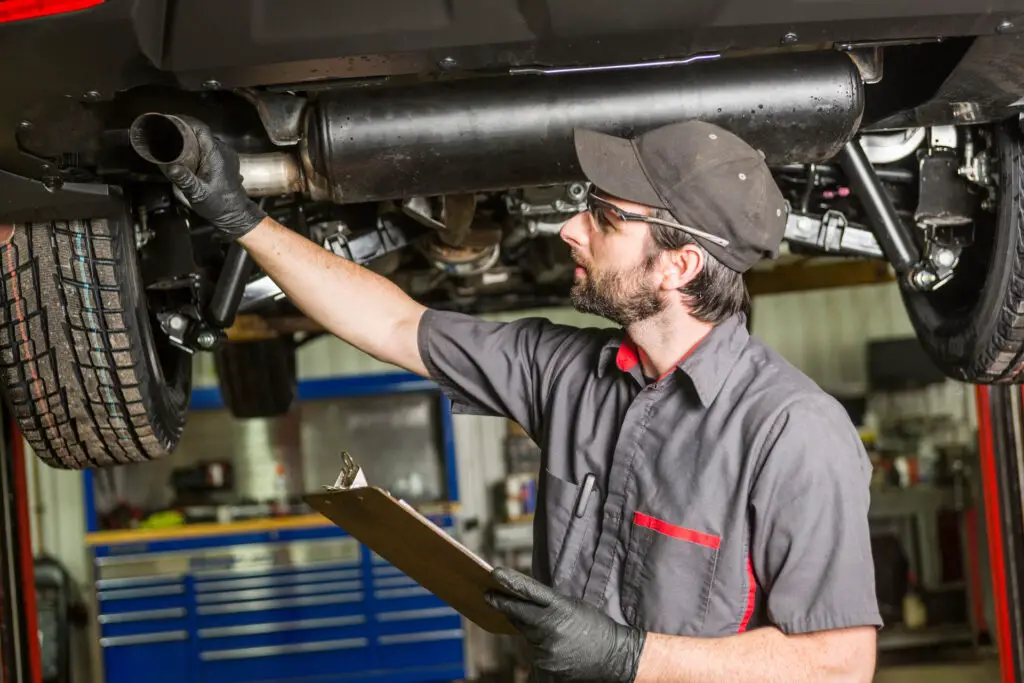In the world of four-wheelers, time is more than just numbers ticking on the dashboard clock. There’s that burning question—how long does routine car maintenance take? From oil changes to brake checks, the clock ticks in a rhythm unique to each service. So, let’s embark on an enlightening journey through the garage, unraveling the mystery of vehicle servicing time and everything else you should know.
How Long Does Routine Car Maintenance Take?
Typically, the time span for routine maintenance ranges from three to five hours. This estimate covers the basics – topping up crucial engine fluids, inspecting tire pressure, as well as a filter check. These crucial automotive services are designed to be efficient, ensuring your four-wheeler spends more time on the road than in the shop.

Which Services Constitute Routine Vehicle Maintenance?
Picture your prized ride as a star athlete – to stay in peak condition, regular training and check-ups are a must. In the automotive world, this translates to a variety of services that make up routine maintenance.
Each service plays a vital role and has its own timeline. From engine oil changes to tire rotations, these tasks are the training regimen keeping your vehicle fit and ready for the long haul. Let’s break down these essential services and their recommended intervals:
| Service | Interval |
| Oil and filter change | Every 5,000-7,000 miles (every 12 months) |
| Tire rotation | Every 5,000-8,000 miles (every 6 months) |
| Cabin air filter | Every 15,000-25,000 miles (every 12 months) |
| Wiper blade replacement | Every 6-12 months |
| Brake pad replacement | Every 30,000-50,000 miles |
Why Regular Check-Ups Are Crucial for Your Prized Ride?
Just like regular visits to the doctor keep you in tip-top shape, regular check-ups for your prized four-wheeler ensure it stays reliable and safe. Here’s why sticking to the upkeep timeframe is key:
- Regular check-ups identify and fix potential safety hazards,
- Addressing small issues early can prevent costly repairs down the road,
- Keeping up with service intervals ensures optimal performance,
- These routine visits extend the life of your four-wheeler,
- Properly maintained vehicles often have better fuel efficiency,
- These vehicles also typically have a higher resale value,
- Knowing your four-wheeler is in good condition reduces the stress of unexpected breakdowns.

Car Service Scheduling – The Factors That Play Into the Automobile Service Interval
Much like people, no two cars are identical, and this uniqueness extends to their upkeep as well. From sporty convertibles to sturdy family SUVs, the timeframes vary from one vehicle to another, influenced by several key factors:
Vehicle Model
The make and model of your four-wheeler set the baseline for its schedule. High-performance sports cars, for instance, might need more frequent tune-ups compared to a family sedan. Luxury models, on the other hand, often require specialized care and parts, which can significantly influence the timeline.
Age of the Vehicle
Obviously, maintenance requirements evolve as cars age. A brand-new four-wheeler might breeze through the first few years with basic upkeep, but as it ages, more thorough checks become necessary.
Vehicle Condition
Another obvious but equally as important factor is the current condition of your prized ride. A vehicle that’s been through some off-road driving adventures or extreme weather conditions might need more TLC compared to one that’s had a cushy life in mild climates. It’s similar to athletes – those who’ve endured tougher conditions often require more intensive care to stay in top form.
Breaking Down the Auto Care Schedule – Time Estimates for Different Tasks
With various factors influencing the exact timeframe, navigating your vehicle’s upkeep can sometimes feel like a guessing game. However, there are estimates that can provide a rough roadmap, helping you plan your day around your car’s pit stop. Here are some of those general timeframes:
- Oil change – 30 minutes to an hour,
- Tire rotation – 15 to 30 minutes,
- Air filter replacement – 15 to 30 minutes,
- Brake inspection – 30 minutes to an hour,
- Battery replacement – 15 to 30 minutes,
- Coolant flush – roughly an hour,
- Transmission service – 1 to 3 hours.
Professional vs. DIY Car Maintenance Time and Other Considerations – Which Is the Route for You?
Let’s be real, vehicle expenses are no joke, and when it comes to servicing, potentially saving both time and money is crucial. It’s a commitment, and sometimes the complexity of modern cars can turn a simple task into a real challenge. But those who are willing to invest some time in learning and doing can take the DIY route, potentially cutting down expenses a whole lot in the long run.
On the other hand, opting for professional servicing gives you the opportunity to rely on expertise and specialized equipment for your ride. Experienced mechanics can also spot issues that might escape an untrained eye, preventing bigger problems down the road. The whole ordeal might mean a little extra on the price tag, but it all comes down to which aspects you value more.

Automotive Maintenance Efficiency Tips & Tricks for Saving Time
In the fast-paced rhythm of modern life, time is indeed a currency as valuable as money. When it comes to the upkeep of your prized ride, saving time is like saving cash. By adopting a few savvy tips and tricks, you can turn car care into a well-oiled machine that saves both:
- Schedule maintenance in advance to avoid busy periods,
- Know the recommended service intervals for your vehicle to plan efficiently, checking the owner’s manual for this information is a good place to start,
- Look for trusted local services, as these mechanics can often provide faster turnaround times,
- Track past services to avoid unnecessary repeat work,
- Use apps to track schedules and receive reminders.
Consider Combining Maintenance Tasks in One Single Visit
Out of all the tricks, combining multiple tasks in a single visit can be especially beneficial. For instance, while your four-wheeler is in for an oil change, why not have the tires rotated and brake pads checked too? This strategy not only saves you multiple trips to the garage but also ensures your ride gets comprehensive care. Plus, it can be easier on your wallet, as some shops offer package deals or discounts for multiple services.

What About High-Performance Four-Wheelers? Can Their Maintenance Be Time-Effective?
High-performance vehicles, with their roaring engines and sleek designs, are the thoroughbreds of the automotive world. But with great power comes great responsibility, especially in terms of upkeep. These machines are engineered for peak performance, which often means more specialized and time-consuming care.
For example, the intricacies of their advanced mechanics will definitely require a broader engine or brake service timeframe. Additionally, the use of high-end, less common materials and parts can add to the time taken, not to mention the expenses. This doesn’t necessarily mean that maintaining high-performance vehicles or modified cars is an endless time sink. It’s just that they require a more nuanced approach. But all of that seems to be worth it as soon as you hit the road.

What Does the Future Have In Store? The Impact of Technology on Car Health Check Duration
As we shift gears into the future, technology is playing a starring role in transforming vehicle upkeep. Today’s diagnostic tools are quick, sophisticated, and incredibly accurate. This evolution will definitely keep cutting down the time it takes to identify and fix issues. Who knows? Maybe one day, vehicle care will be as swift and seamless as a software update on your smartphone.
Predictive Maintenance Has the Potential to Save Plenty of Time
There’s one interesting aspect of this whole evolution of care – predictive maintenance. This forward-thinking approach involves using advanced diagnostic tools and software to predict potential issues before they even arise. It’s a weather forecast, but for your wheel, giving you a heads-up before the storm hits.
Wrapping up the Journey of Maintenance Timing Has Never Been This Quick
As we park at the end of our exploratory journey, it’s clear that the road is as varied as the cars we drive. From the quick pit stops of routine check-ups to the more time-intensive care of high-performance machines, understanding the timing is crucial. As technology continues to evolve, so too will efficiency, making our future trips to the mechanic quick, more precise, and more convenient. Here’s to smoother roads ahead!
Frequently Asked Questions
Do Electric Vehicles Require Less Maintenance Time Compared to Gasoline Cars?
Electric vehicles (EVs) generally require less time for upkeep compared to gasoline cars. This is because they have fewer moving parts and don’t require oil changes, fuel filters, spark plug replacements, or emission checks. However, they still require regular checks of the brakes, tires, and other standard components.
How Often Should Routine Car Maintenance Be Performed?
Routine checks should typically be performed according to the manufacturer’s recommended schedule. This often includes oil changes every 3,000 to 10,000 miles, tire rotation every 6,000 miles, and major service every 30,000 miles, though intervals can vary widely based on the exact model and driving conditions.
How Can I Tell if My Car Needs Immediate Maintenance?
Signs that your car needs immediate attention include unusual noises, warning lights on the dashboard, abnormal smells, leaks, changes in handling or braking, and a decrease in performance. Any of these symptoms should prompt a check-up as soon as possible to avoid further damage.
Can Delaying Routine Maintenance Increase the Overall Time Needed for Servicing?
Yes, delaying routine check-ups can indeed increase the overall time needed for servicing. Minor issues can always develop into more significant problems, so neglecting your vehicle’s needs to save money can actually lead to more expensive repairs and longer servicing times to address compounded issues.
Is It Faster to Do Car Maintenance at Home or at a Professional Service Center?
Performing maintenance tasks at home can be faster for simple jobs like oil changes or air filter replacements, especially if you have the necessary skills and tools. However, for more complex services, a professional center will likely be faster.








